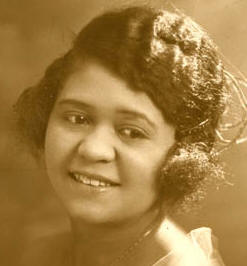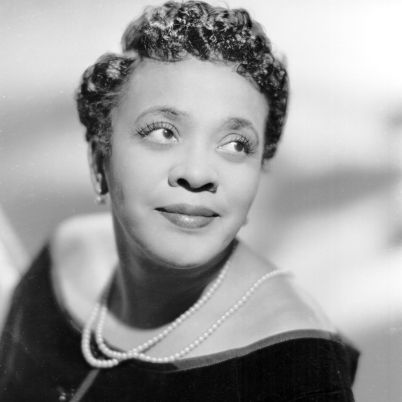“Hidden away from public scrutiny is where a Black woman who cherished respectability joyfully reminisces about her indulgence of feelings that she wishes not to forget.”1 So begins Tara T. Green’s exploration of Black women’s challenges and achievements in seeking pleasure, aptly titled See Me Naked: Black Women Defining Pleasure in the Interwar Era. The above quote comes from the book’s foreword, which briefly focuses on Alice Dunbar-Nelson, whose brilliant self-referential work on pleasure as a quest to care for oneself is the source of the book’s title.
See Me Naked continues a conscientious discussion on how Black women historically answered the call of pleasure in their lives. Weaved between the ancestry of these pleasure tales, Green also poses a question to the reader: how does one clearly define Black womanhood? This question is important in understanding a Black woman’s body narrative. Much of Green’s scholarship here highlights the role of cultural practices in shaping Black women’s experiences of pleasure during the interwar era: music, dance, writing, and public performing, for example. Each area often serves as the only spaces where Black women could freely express and experience pleasure without harm, maybe.
On the face of it, See Me Naked may come across as a direct, opposite response to Darlene Clark Hine’s “culture of dissemblance.”2 In her landmark work, Hine addresses gaps in the historical narratives of the Black women’s experiences with sexual violence that caused many Black women to conceal their inner lives from the public; but it is not. See Me Naked is a companion text to Hine’s scholarship. It shows how Black women, even during the time of sealing off their inner lives, used pleasure as a means of survival both privately and publicly. Green’s offering is of the few women who dared to show their allegiance to pleasure publicly.

Yolande Du Bois, daughter of W.E.B Du Bbois, is the first subject whose pleasure journey is chronicled. Immediately we are met with Yolande’s looming need for acceptance from her father. “Du Bois’s restrictive prescriptions on Black people and women in particular meant that Yolande was born into an ideal of Black womanhood that Du Bois expressed in his work but did not necessarily practice.”3 Her love and passion for writing, teaching, and art were ever present but often overshadowed by the men who pulled at her sensibilities more than the pleasures that made her whole. Much of what was detailed about Yolande had to do with an overwhelming longing—longing for freedom to express. Even in her letters to Countee Cullen, whom she married and divorced in less than a year, she expressed deep desires to be close to him that he seemed to reciprocate. Through writing, we see Yolande as the woman she wants to be: free, pleasure-filled, honest. In her short stories, Yolande produced the voices of Black women and girls that mattered the most to her. The overwhelming theme was “mothers [who] are influential in how their children think about the world outside of their own.”4 These stories were a callback to Yolande’s freedom to express, but in her daily life Du Bois’ voice was louder than hers, “her voice was his voice,”5 which led to Yolande’s voice being ultimately silenced by the weight of the men who were supposed to love her.
In Lena Horne’s story, she found her voice through performance. Being raised by an incapable mother, Horne learned early on that she had to rely on herself for survival. “Little Lena could not find her voice, perhaps driving her to express herself through performance.”6 Mostly raised by her activist grandmother, Horne believed that “Silence [was] an act of respectability.”7 Lena struggled greatly in the liminal space between the respectable shadow of her grandmother’s activism and the pleasure that called her to perform and indulge her body in sexual desires. Through an analysis, and often too long explanation, of Horne’s film career, we find that many of her roles centered on the pleasure that was absent early in her life. These roles represent Horne’s talent, but also her diligent circumvention of what others defined as Black womanhood and pleasure-seeking; and what these pleasure practices meant to her. Horne’s pleasure points were: “pleasures in looking, pleasures in being looked at, pleasures in performing racial fictions, pleasure in upending racial fictions of the industry’s moguls”8 as noted by feminist scholar Jennifer C. Nash.
Through humor and creating a public persona, Moms Mabley used her voice for the women who adopted a culture of dissemblance. She educated her audience on “racial and gender stereotypes that limit progressive thinking, mistreatment of women and girls by older men, and sexual repression designed to privilege patriarchal heteronormativity.”9 Moms Mabley was the most compelling pleasure tale in this series. She was a large-bodied, dark-skinned woman, who “leveraged her pioneering presence on the comedy stage to critique a repressive society that was specifically limiting to Black women and even more so to Black queer women.”10 However, this chapter presents several outside voices who are necessary, in a sense, but given far too much stage time overshadowing Moms Mabley. First, there is Butterbeans and Susie, a married singer/dancer duo who temporarily become the center of attention showing their major influence on Moms’ career. “Mabley would learn from Butterbeans and Susie that comics had a great deal of control over their art and that there would always be people willing to pay for the pleasure of laughter.”11 There is also a sidebar on Hurston’s dejection of comedy then acceptance of it reflected in uses of comedy in the novel Their Eyes Were Watching God. These tangents give us a glimpse into comedy’s prolific power of disrupting spaces, but it also leaves less room for Moms Mabley’s voice to be heard. Mabley created a persona mirrored after her grandmother, who taught her how to tell the truth: the most powerful use of one’s voice. Nevertheless, we understand that Moms Mabley’s life is influential in breaking down barriers and creating a legacy, particularly for The Apollo Theater, where she found regular work. For Mabley, the Apollo Theater was “a place of possibility that reflected and mediated the tensions between aspiration and possibility.”12 Moms Mabley’s jokes, while funny and often shocking, are an education in self-efficacy, pleasure, and survival.

See Me Naked entrusts the audience with the inner lives of Black women who, despite using their voices loudly to seek and center pleasure, also did so during a time when self-effacing was the norm. These women used their voices and bodies as cartography for Black women of future generations. Memphis Minnie’s discography of sexual exploration, resilience, and “feminine power as a way of accessing pleasure”13 has created a path for albums such as Janet Jackson’s The Velvet Rope, Janelle Monae’s The Age of Pleasure, and Beyonce’s Renaissance. Minnie’s chapter provides the vacillation between seeking pleasures that “test the power of gendered subjects”14 and envisioning a life where she continues to “create a self that tells how she used her body as a form of action and pursuit.”15
While the title purports that Green will give examples of how these Black women define pleasure, we are, instead, met with the overtone of what it means to have and use their voices. In a multitude of ways, the voices of each of these women were used against them and nearly stripped away in their pursuit of agency and pleasure. Pleasure-seeking then becomes a form of resistance to keep the voice intact and to produce an external self that represents the radical imagination of Black womanhood.
While readers of See Me Naked will undoubtedly remain hungry for deeper explorations of the pleasure practice of Black women during the interwar era, it is a critical text added to the archives as evidence of the integrity of Black women’s sexuality and pleasurable experiences. It is evident, however, that increased historiography will be required to fully capture the stories of those underwritten by the tall tales of white, patriarchal notions of pleasure and respectability.
Notes
1. Tara T. Green, See Me Naked: Black Women Defining Pleasure in the Interwar Era (New Jersey: Rutgers University Press, 2022), 1.
2. Darlene Clark Hine coined the term “culture of dissemblance” to describe how black women concealed their inner lives to protect themselves from sexual exploitation and rape during the Reconstruction Era. In See Me Naked, Green builds on Hine’s theory by presenting nuanced ways Black women navigated societal limitations and expectations while still centering their desires and pleasure-seeking during the interwar era.
3. Green, See Me Naked, 29.
4. Green, 36.
5. Green, 47.
6. Green, 56.
7. Green, 56.
8. Jennifer C. Nash, The Black Body in Ecstasy: Reading Race, Reading Pornography (Durham: Duke University Press, 2014), 23.
9. Green, 84.
10. Green, 84.
11. Green, 91.
12. Green, 99.
13. Green, 129.
14. Green, 122.
15. Green, 120.
Bibliography
Tara T. Green, See Me Naked: Black Women Defining Pleasure in the Interwar Era (Rutgers University Press, 2022).Jennifer C. Nash, The Black Body in Ecstasy: Reading Race, Reading Pornography (Duke University Press Books, 2014).